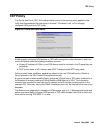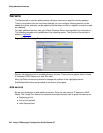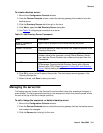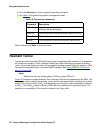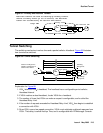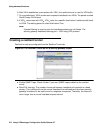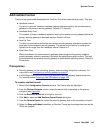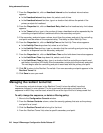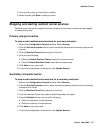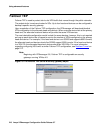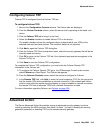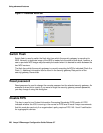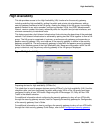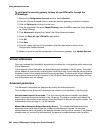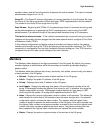
Using advanced features
216 Avaya VPNmanager Configuration Guide Release 3.7
7. From the Properties list, click on Heartbeat Interval so the heartbeat interval values
appears.
● In the Heartbeat Interval drop-down list, select a unit of time.
● In the Heartbeat Interval text box, type in a duration that defines the period of the
primary end-point’s heartbeat.
8. From the Properties list, click on Heartbeat Retry Limit so the heartbeat retry limit values
appears.
● In the Times text box, type in the number of times a heartbeat must be requested by the
controlling end-point before it switches traffic to the secondary end-point.
9. If the secondary end-point uses a slower circuit than the primary end-point, the controlling
end-point must be aware of the expected delay. That delay is called Hold-Up Time.
10. From the Properties list, click on Hold Up Time so the Hold Up Time values appears.
● In the Hold-Up Time drop-down list, select a unit of time.
● In the Hold-Up Time text box, type in a duration that the controlling end-point may have
to wait for a response from the secondary end-point.
11. From the Properties list, click on Hold-Down Time so the hold-down time values appears.
● In the Hold-Down Time drop-down list, select a unit of time.
● In the Hold-Down Time text box, type in a duration that the controlling end-point must
wait before it switches VPN traffic from the secondary end-point to the primary end-point.
The wait begins after the controlling end-point reconnects with the primary end-point.
12. Click OK to return to the Resilient Tunnel tab. Your new secondary end-point appears in the
Resilient Tunnel list.
13. Click Save to save your work.
Managing the resilient tunnel list
The secondary end-points shown in the Resilient Tunnel List can be edited, have their
sequence changed, or even deleted. The list organizes the secondary end-points in the
sequence in which they must be used, where the one at the top of the list is always used first.
To edit, change the sequence, or delete a filtering policy:
1. Move to the Configuration Console window.
2. From the Device>Contents column, select the security gateway that acts as the primary
end-point for a tunnel.
3. Click the Resilient Tunnel tab to bring it to the front.
4. From the Resilient Tunnel List, select a specific secondary end-point.




